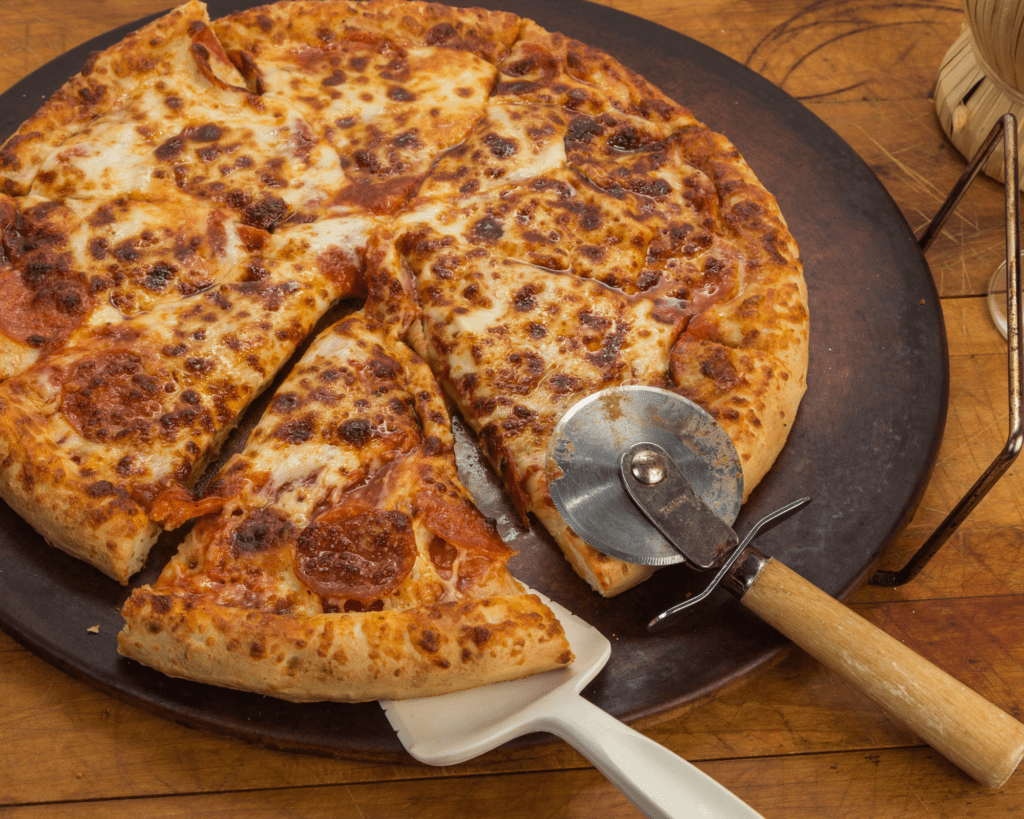Fans of artisanal pizza are already likely proud owners of a pizza stone, which helps their oven mimic the confines of a brick oven. What’s fantastic about pizza stones is that they perfectly distribute heat under the dough, evenly cooking them every time.
You should never wash a pizza stone with soap and water, as the soap will get in the pores of the stone. Unless you want to taste soap in everything you cook on it, avoid cleanser at all costs. While the porous surface of a pizza stone allows you to make a moist and delicious pizza crust, it also works in reverse, and any moisture getting into your stone can destroy it.

Like everything involved in cooking pizza, there’s a fine art to properly cleaning a stone. This post will walk you through just how to keep your stone clean while avoiding any products that will ruin the stone.
Do You Wash a Pizza Stone?
You’ll need a few items before beginning to clean. Here’s a list of what’s necessary:
- Spatula – preferably plastic
- Soft cloth
- Baking soda
- Water
- Brush, either a toothbrush or stiff-bristle plastic brush
Before you start cleaning, let the stone cool first. If it comes into contact with water while still hot, it could crack or even break.
- Using the spatula, scrape any melted cheese off the stone. Don’t use metal, as it will scratch the stone.
- Wipe away any remaining cheese or hard-to-remove bits with the soft cloth.
- If there’s still some crusty bits, make a paste using baking soda and water.
- Using the soft cloth, apply a bit of the paste and rub the crusty bits out in a circular motion.
- Dampen the cloth and repeat until you think you’ve gotten off all you can in this fashion.
- If there’s still some stubborn bits left, turn up the oven to 500 degrees fahrenheit and put the stone in to cook off what’s left.
- Let your stone dry for up to two hours before using it again.
But remember, your stone is going to stain and there’s nothing you can do, no matter how hard you scrub. Accept this, and don’t obsess over some stains that are unremovable. But the stains that stick around are not going to have an impact on anything you cook using the stone. You’re still going to make the same, great-tasting pizza you always do.

Other Methods of Cleaning
There really isn’t much variety in terms of methods of cleaning a pizza stone. The best, safest way to do it is by hand. Other methods carry too much risk. However, there is one other way to clean the stone. This is a one-time method that you don’t want to repeat, as repeated cleaning in this manner may crack your stone.
But it may be worth the one-time use just to save you the hassle of scrubbing incessantly. The reason why you want to avoid using a self-cleaning oven to clean a pizza stone is if there’s too much grease, you can start a fire.
A lot of ovens that come with a self-cleaning feature have a self-lock, so if a fire starts in your oven, you might not be able to get to it before it does some serious damage.
But if you’re going to do it just once, here’s how:
- Clean your oven. Be thorough, leave no grease or oil or food left inside.
- Wipe your stone with a soft cloth. Get rid of any crust that you can in this manner.
- Place the stone in the oven and set it to 500 degrees fahrenheit. Increase the heat gradually, so as not to crack the stone.
- When it reaches 500, leave it in the oven for an hour.
- Turn on the self-cleaning feature. This gets your oven hotter than usual, burning off any remaining food. Be sure to let it run its full course, unless you see a fire.
- Keep an eye on the stone. There should be grease bubbling on its surface. You’ll see smoke, but don’t open the oven unless you see fire.
- If you see fire, turn off the self-clean and call the fire department immediately.
- Always allow your stone to cool after cleaning.
Again this should only be done once. You might want to save this method for when you’re in a hurry and only have a day before you need to use the stone again. I find it helps to plan when you’re going to use your stone well in advance, so you’ll always have it clean and ready for use.